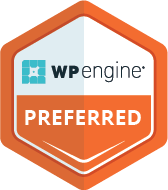
In the ever evolving world of digital advertising, simply setting up a Google Ads account and letting it run on autopilot is a strategy that can quickly lead to inefficiency and missed opportunities. You can easily see costs per click and conversion climb higher and higher when your accounts are ignored or not fully optimized for your goals.
Active management of Google Ads accounts is essential for businesses looking to maximize their return on investment, ensure optimal cost-per-click (CPC), and drive conversions. Here’s why:
- Dynamic Market Conditions: The digital market landscape is constantly evolving. Consumer behaviors, competitor strategies, and market trends change rapidly. Without active management, your ads can become outdated, leading to decreased relevance and effectiveness.
- Keyword Optimization: Keywords are the backbone of Google Ads. Continuous monitoring and tweaking of keywords are crucial. Active management involves adding new, relevant keywords, removing underperforming ones, and adjusting bids to optimize for the best performing keywords. This process ensures your ads remain visible to the right audience.
- Ad Copy Relevance: The ad copy needs to be compelling and relevant to your target audience. Regularly updating the ad copy to reflect current promotions, seasonal offerings, or market trends can significantly increase click-through rates and conversions.
- Budget Allocation and Bid Management: Effective budget allocation and bid management are vital for maximizing ROI. Active management allows for adjusting bids on high-performing keywords and reallocating budget from underperforming campaigns to those delivering better results.
- Quality Score Improvement: Google’s Quality Score affects your ad placement and CPC. It’s based on the relevance of your keywords, ad copy, and landing pages. Regular optimization of these elements is necessary to maintain or improve your Quality Score, potentially lowering your CPC.
- Conversion Tracking and Analytics: Understanding what happens after a user clicks on your ad is crucial. Active management includes monitoring conversion rates, identifying which ads lead to sales or desired actions, and making adjustments to improve performance.
- A/B Testing: Regularly conducting A/B tests on different elements of your ads, such as headlines, descriptions, and call-to-actions, can provide valuable insights into what resonates with your audience, leading to more effective ads.
- Adapting to Google’s Algorithm Updates: Google frequently updates its algorithms. Staying on top of these changes and adjusting your strategies accordingly is essential to maintain ad performance.
- Responsive Strategy Adjustments: The ability to quickly respond to underperforming ads, sudden market changes, or emerging opportunities is a significant advantage of active management. It allows businesses to stay agile and competitive.
Leveraging Google Ads Tools Effectively for Business Growth
In addition to actively managing campaigns to ensure that they are optimized fully, you need to work with someone that has a deep understanding of all of the Google Ad tools that are available.
There is a lot more to it than just keyword based search ads. Google offers a wealth of advertising opportunities and using them all together, when appropriate can help generate more revenue for your business.
- Remarketing: Remarketing is a powerful tool for reconnecting with users who have previously interacted with your website or mobile app. It allows you to tailor your messages to audiences based on their past behaviors, increasing the likelihood of conversion. By segmenting audiences and creating personalized ad content for each group, businesses can significantly improve their engagement and conversion rates.
- Performance Max: This relatively new campaign type utilizes Google’s machine learning to optimize ad performance across all Google platforms, including YouTube, Google Search, Display Network, and more. By setting clear goals and providing quality assets, businesses can leverage Performance Max to reach customers across multiple touchpoints, leading to increased conversions and a broader reach.
- Video Ads: With the growing popularity of video content, video ads on platforms like YouTube offer a dynamic way to engage potential customers. These ads can be targeted based on user demographics, interests, and behaviors, making them highly effective for brand awareness and conversion. Crafting compelling video content that resonates with your target audience and aligns with your brand message is key to success in this format.
- Google Shopping Ads: For e-commerce businesses, Google Shopping ads can drive traffic and sales by showcasing products directly in search results. High-quality images, accurate product descriptions, competitive pricing, and regular updates to your product feed are essential for optimizing these ads.
- Responsive Search Ads (RSAs): RSAs allow you to create ads that automatically adjust their content and format to match what potential customers are searching for. By providing a variety of headlines and descriptions, Google’s AI will test different combinations and learn which performs best, optimizing your ads over time.
- Local Campaigns: For businesses with physical locations, local campaigns can drive foot traffic by showing ads across Google’s properties, including Maps and Search. Utilizing location targeting and location extensions can help attract nearby customers.
- Discovery Campaigns: These campaigns are designed to reach potential customers across Google’s ‘discovery’ surfaces, like the YouTube home feed or Gmail. They use audience targeting to reach people who are most likely to be interested in your products or services, even before they start searching.
- Conversion Tracking and Analytics Integration: Understanding how your ads lead to valuable customer activity is crucial. Integrating Google Analytics with your Google Ads account provides deeper insights into customer behavior and helps in optimizing the campaigns for higher conversions.
- Smart Bidding Strategies: Utilizing Google’s AI-driven smart bidding strategies like Target CPA (Cost Per Acquisition), Target ROAS (Return On Ad Spend), and Maximize Conversions can help optimize bids in real-time, improving the efficiency of your ad spend.
Are you comfortable using all of the tools in the Google toolbox? If not, then having a professional actively manage your Google Ad accounts with you may be a great option to maximize your leads and revenue from your Google Ad budget.
Let's Do This Together.
Join over 10,000 subscribers that receive our digital newsletter, full of actionable news and information you can apply to your business. Sign up today!
Sharing Is Caring.
Share this post with all of your contacts by using the social sharing links below.
Related Content.
To Go Fast, Go Alone. To Go Far, Go Together.
Are Your Ready To Take The Next Step? Drop us a line today for a free consultation.
Get In Touch
Apache Interactive
Kingwood Texas
832.971.4905
Connect@ApacheInteractive.com
We Love Referrals
Who We Are And What We Do
Apache Interactive is a digital marketing agency specializing in technical SEO, online advertising (PPC), content marketing, and web design and development services.
We work directly with client companies, and also partner with other marketing and branding agencies that want to have a digital marketing expert on call to assist with challenging projects.
Stay Connected
The Internet is a big place and we love to hang out on all of the major social networks.
Follow our accounts and never miss any of our photos, videos, or other digital marketing mayhem.





